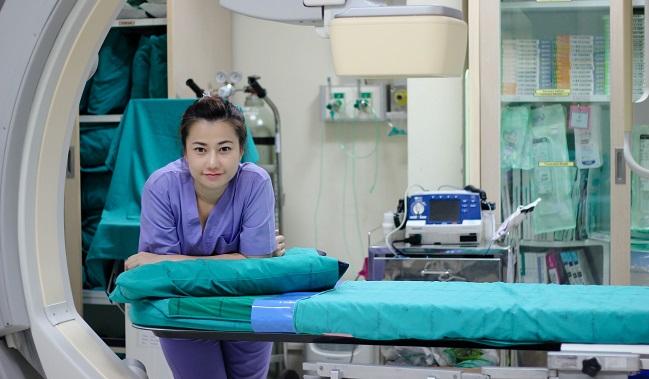Scrub Tech Radiation Exposure Needs Rethink, Particularly as Patient BMIs Climb Higher
Researchers believe their study may be one of the first to look beyond physicians and nurses to consider scrub-tech safety.

WASHINGTON, DC—Efforts to minimize radiation in the cath lab should consider all staff members, new data suggest, particularly given the rising body mass index (BMI) of many patients on the table.
Lahdan Refahiyat, MD (Spectrum Health, Grand Rapids, MI), presented findings on scrub-tech radiation exposure at CRT 2018 earlier this week, noting that most of the research in this area has focused on physicians and nurses, with some studies noting the risks associated with higher patient BMIs.
“We need to be aware of all of the individuals in our procedure labs and make sure of their safety,” she told TCTMD. “We’re there to promote better health for our patients, but that shouldn’t be at the expense of those who are helping them.”
The primary source of radiation hazard in the cath lab is scatter radiation from the patient, which is proportional to radiation dose. “Given the larger radiation doses needed to produce adequate images in obese patients, it’s not surprising that obese patients emit greater amounts of scatter radiation,” she said. What with the mounting BMIs of patients coming into US cath labs, radiation exposure to staff is also likely to climb. “The obesity epidemic has the potential to alter the occupational risks of those working the catheterization laboratory,” Refahiyat commented.
The obesity epidemic has the potential to alter the occupational risks of those working the catheterization laboratory. Lahdan Refahiyat
For the study, Refahiyat and colleagues collected real-time radiation exposure during coronary angiography using bedside dosimetry systems as well as dosimeters on the left side of scrub tech glasses or thyroid collar and underneath their lead apparel. All staff wore standard protection (lead skirt, apron, and thyroid collar) and were blinded to dosimetry data during the procedures.
In all, radiation doses were collected during 642 consecutive cases. Patient BMIs were also measured, revealing that only 18% of patients had BMIs below the cutoff for normal (25), while 34% were in the 25-29.9 range, 28% were in the 30-34.9 range, 12% were in the 35-35.9 range, and 8% were above 40.
As expected, radiation exposures for scrub technicians tracked with higher BMIs. Compared with the exposure seen during angiograms of patients with BMIs under 25, a BMI in the 35-39.9 range was associated with a 2.7-fold increase in radiation effective dose. A near doubling was also seen with a BMI > 40, but low numbers meant this link was not statistically significant. Pairwise comparisons showed that scrub tech effective dose rose in tandem with patient BMI, Refahiyat added.
This “stepwise increase” is consistent across nurses, physicians, and scrub techs, she told TCTMD. “The numbers are somewhat different, and I think that has to do with mobility—physicians tend to be in a fixed location compared to the patient, while scrub techs are much more mobile, as are nurses—so figures are going to vary based on that factor alone.”
This may mean that different types of shields and apparel may be warranted for people in different cath lab roles, taking mobility and position into account, and that warrants further study, she said.
“This is just the beginning, hopefully, of this awareness,” Refahiyat told TCTMD. Going forward, “we could expect to see steps forward to improve staff member safety as well as physician safety.”
Shelley Wood was the Editor-in-Chief of TCTMD and the Editorial Director at the Cardiovascular Research Foundation (CRF) from October 2015…
Read Full BioSources
Refahiyat L. The impact of BMI on radiation dose among scrub technologists during cardiac catheterization. Presented at: CRT 2018. March 4, 2018. Washington, DC.
Disclosures
- Refahiyat reports no relevant conflicts of interest.


Comments